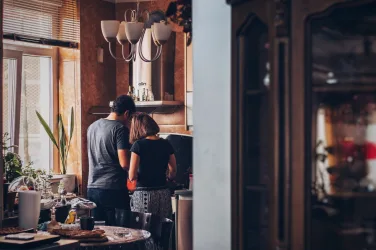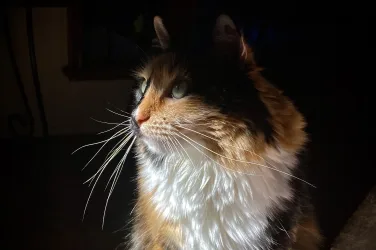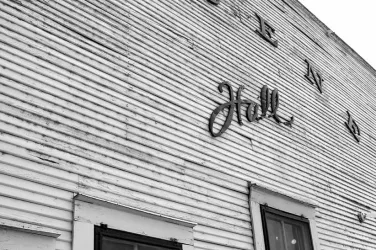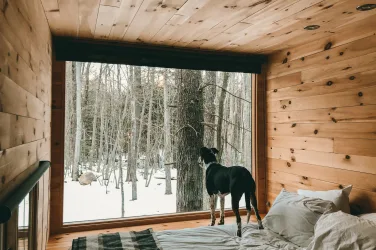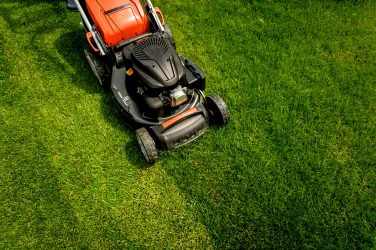
By Molly Knight
The first thing I learned about ostriches is that there is no reason they should exist. They are too delicate, too stupid, too vulnerable, too diseased to survive, and yet somehow they do.
This was explained to me as I knelt on the floor beside a Styrofoam incubator full of ostrich chicks who had nearly broken free of their eggs. Just weeks before, I’d been working behind a desk at an art museum in the States. Now here I was—on a little mismatched farm in the mountains on the far side of Bulgaria, the furthest I’d ever been from home—calling myself a volunteer ostrich farmer.
I watched in wonder as the chicks emerged, exhausted, shaped like they were still in the eggs, with round, watery rumps like water balloons. My first impression was that they looked like porcupines, with their salt-and-pepper mix of wet, budding feathers poking out from round bodies.
The next lesson I learned was that ostriches are not shy. The first time I entered the barn with the one, two, and three-week old chicks to give them food and water, I was welcomed by a barrage of tiny beaks pecking at the laces of my shoes. The older chicks in their pens were more interested in my belt loops and the straps of my shirt, and the full-grown birds in the fields went after the part of me closest to their eye level: my hair.
These experiences became part of my daunting montage—lifting, carrying, dragging, hiking, spraying, dumping, mowing, stacking, whacking, pushing, and cutting, wondering what in the world I was doing at an ostrich farm.
Over the next week, though, I settled into the rhythms of the place, the needs of the animals, and the welcoming shade during the sunniest times.
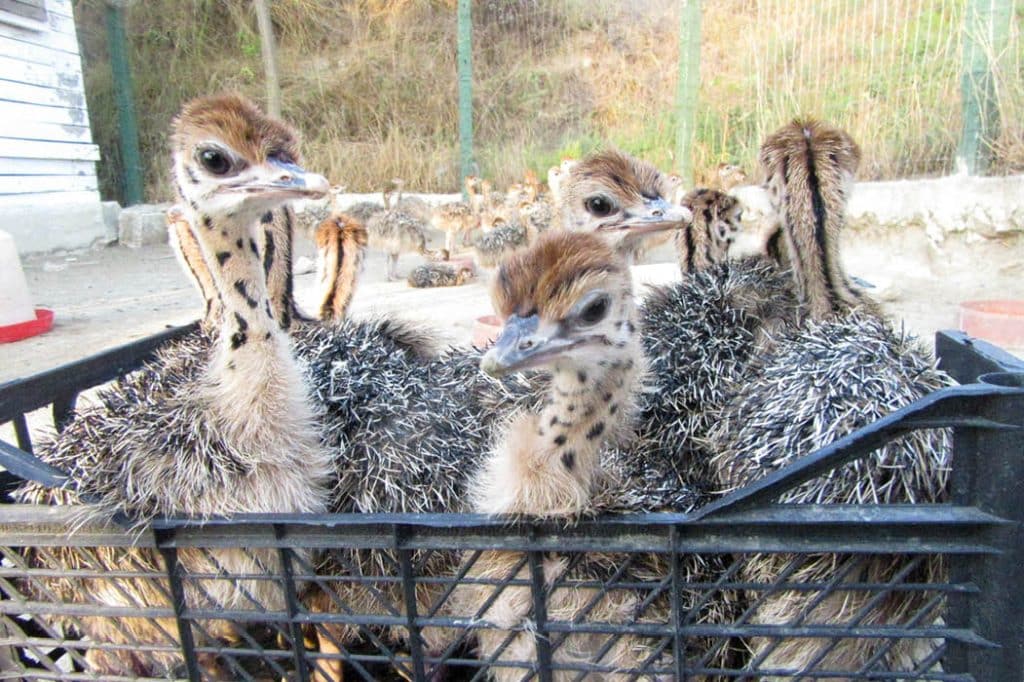 On the farm, cliché though it may sound, the sun counted the hours and the moon counted the days. Never had I been so in tune with the outside world, or so taken aback by the changes in my body. My arms lost their pale desk-job sheen and turned a golden brown, and muscles I didn’t know I had started pushing through. Trips hiking up and down the mountains, which overwhelmed me throughout my first week, became a matter of course, and the oversized bags of feed for the birds I’d dreaded dragging to the troughs at the beginning ultimately found their way onto my shoulder, carried with ease.
On the farm, cliché though it may sound, the sun counted the hours and the moon counted the days. Never had I been so in tune with the outside world, or so taken aback by the changes in my body. My arms lost their pale desk-job sheen and turned a golden brown, and muscles I didn’t know I had started pushing through. Trips hiking up and down the mountains, which overwhelmed me throughout my first week, became a matter of course, and the oversized bags of feed for the birds I’d dreaded dragging to the troughs at the beginning ultimately found their way onto my shoulder, carried with ease.
My favorite task was collecting the eggs in the evenings. After making sure the birds had food and water to last through the night and ushering the younger birds into their houses, I’d grab a bucket and head towards the silhouettes of the birds down the mountain. The lengthening shadows made me feel taller, and the perspective made each night’s sunset an unmissable show. Armed with a stick, I’d wait until none of the males were looking, duck under the fence, and scramble to the giant dirt nests to recover the eggs and stack them gently in the bucket.
Then, I’d deliver the eggs to the hatchery, where they were washed to be rid of any bacteria, carefully marked with the date, and placed in an enormous incubator. From time to time during their next few weeks in the incubator, we would take them out and check them with a flashlight. The flashlight test was simple, but in the dark coolness of the hatchery, surrounded by the powerful smell of foreign disinfectant, it always struck me as surreal. The ostrich farmer would choose an egg, hold it at eye level, and press a flashlight to the outside of the shell. The egg would glow like it was illuminated from within, and its shadows would reveal the status of the chick inside. In a good egg, the shadow of the embryo would hint at the developing chick, and by the time an egg was ready to go to the hatchery, it would be almost entirely dark with a sliver of yellow glowing through like a quarter moon.
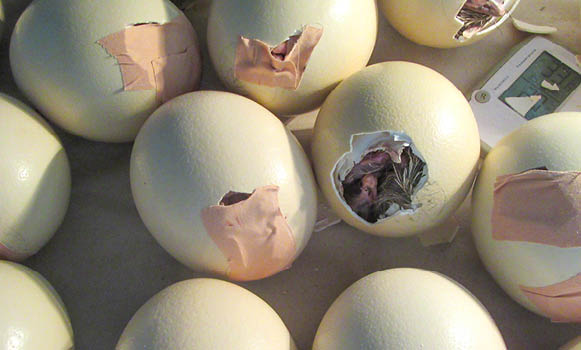 Once the eggs were ready to hatch, we would crack a small hole in each one and peek inside to be sure the chicks were facing the right way to break through the egg’s membrane without getting tangled in it. The farm’s owner oversaw this process, and it was mesmerizing to watch him tug and prod the tiny wet birds into position. Once the birds were set straight, we’d tape them back into the eggs so they didn’t get too dry before they were ready. In my month on the farm I was able to follow a batch of chicks through from eggs in the nest to pens outside the chick house.
Once the eggs were ready to hatch, we would crack a small hole in each one and peek inside to be sure the chicks were facing the right way to break through the egg’s membrane without getting tangled in it. The farm’s owner oversaw this process, and it was mesmerizing to watch him tug and prod the tiny wet birds into position. Once the birds were set straight, we’d tape them back into the eggs so they didn’t get too dry before they were ready. In my month on the farm I was able to follow a batch of chicks through from eggs in the nest to pens outside the chick house.

In the semi-stillness at the end of each day, just as fatigue and hunger from the day’s frenzy set in, the other volunteers and I came together with the farm’s owners and their family on the patio to share a meal, swapping stories of the day’s near-disasters while we passed the plates. The meals were simple and hastily prepared. No five-star restaurant ever tasted so good.




